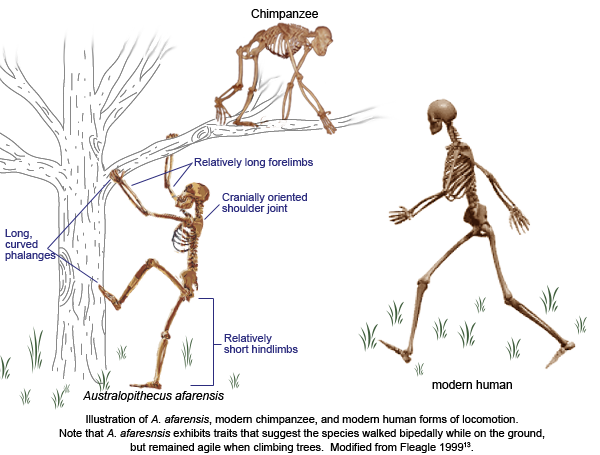The functional demands of bipedalism have exerted a strong influence on the postcranial skeletal adaptations of modern humans as well as extinct hominins. For example, australopithecines share with modern humans many of the essential features of bipedalism such as reorganized pelvic and lower back anatomy, a valgus knee, and a relatively robust calcaneus. However, australopithecines have many unique features that differ from modern humans in significant ways. Humans do not share the long ala of the ilia, the relatively smaller femoral heads, or the curved fingers and toes seen in Australopithecus. This combination of primitive and derived features leads many researchers to support the idea that australopithecines engaged in a form of locomotion that was not identical to that of modern humans, including a greater amount of time engaged in climbing and suspensory behaviors. Australopithecus may, then, represent a mosaic of evolutionary adaptations for life on the ground and in the trees.

eFossils is a collaborative website in which users can explore important fossil localities and browse the fossil digital library. If you have any problems using this site or have any other questions, please feel free to contact us.
Funding for eFossils was provided by the Longhorn Innovation Fund for Technology (LIFT) Award from the Research & Educational Technology Committee (R&E) of the IT governance structure at The University of Texas at Austin.
